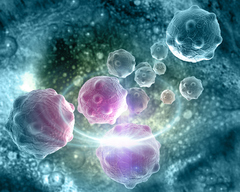Dual-Function Lipidated NCEs
TECHNOLOGY NUMBER: 2022-116

OVERVIEW
Delineation of a dual function, lipidated new chemical element to treat cancer- Produces STING pathway activation concurrently with IDO pathway inhibition
- Can increase the effects of immune check point therapy without increasing side effects
BACKGROUND
The stimulator of interferon genes (STING) transmembrane protein found in endoplasmic reticulum senses cytosolic double-stranded DNA and cyclic dinucleotides (CDNs). Activation of STING has shown potential to enhance antitumor immunity through the induction of a variety of pro-inflammatory cytokines and chemokines. Conversely, activation of the STING pathway has been shown to stimulate tumor growth through the increased production of indoleamine 2,3-dioxygenase 1 (IDO), an enzyme that under normal conditions modulates innate immune responses during infection but which has been seen to activate in tumor cells as well as adjacent stratal cells in neoplasia. The expression of IDO by endothelial cells, immune cells, fibroblasts, mesenchymal cells, and peripheral blood in settings of tumor growth suggests that IDO inhibition can play a part in cancer therapy. Given that previous studies have revealed limitations when separately stimulating the STING pathway or inhibiting the IDO pathway, a need exists for a means by which to concurrently influence both the STING and IDO pathways for research and treatment of human cancers.
INNOVATION
Researchers at the University of Michigan have developed a dual function lipidated chemical element comprising both STING agonist and IDO inhibitor functionality, including use of STING agonist dimers and long chain lipids and 'special' lipids, as a potential pathway for cancer treatment. The basis for the combined effects of these two actions rests on the knowledge that STING agonists can activate IDO and promote the growth of tumors. The inhibition of IDO may therefore increase the effects of immune checkpoint therapy without significantly increasing side effects associated with their use. This combined approach to treatment provides a useful methodology for future cancer treatment research and treatment.